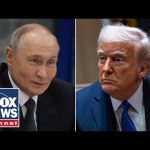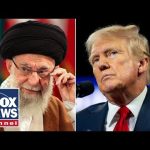In recent days, Washington has been buzzing with news about the trade dynamics between the United States and China. It seems like the proverbial gloves are coming off—or maybe just getting a little worn from being on for too long. As China appears to be making some unexpected adjustments to its tariffs on U.S. goods, many are wondering if these moves indicate that Beijing is finally feeling the heat from President Trump’s trade policies. With 80 countries reportedly in discussions for trade deals, the stakes are high, and the U.S. market is a key player in this global game.
China has been in a trade skirmish with the U.S. for what feels like forever, but these days it looks like they might be reconsidering their stance. Reportedly, the mighty Chinese have pulled back on their steep tariffs—yes, 125% tariffs—on imported American goods. Meanwhile, Trump has been fanning the flames of negotiations, hinting at his discussions with Chinese President Xi Jinping. However, much like a magic show, China is claiming that no talks have occurred at all. One has to wonder if this is merely a case of Xi smiling on the outside while sweating bullets on the inside.
An expert on all things China has suggested that Xi has crafted a precarious position for himself. After all, he has built his legitimacy around surpassing the U.S. If he admits to some backtracking on tariffs, it may seem like he’s caving in to American pressure—a dangerous look for someone who needs to maintain their image with the Communist Party. The truth is that Xi’s grip on power isn’t as ironclad as it seems. Internal strife and power struggles have become the norm within the Chinese Communist Party, meaning Xi is walking a tightrope that could snap at any moment.
Interestingly enough, there’s been chatter about China’s economy, which claims to have grown at a robust pace of around 5.5%. However, a closer look at underlying indicators reveals a different story—one that seems stuck in a deflationary slump. With tensions rising both internationally and domestically, there’s a concern that if economic conditions worsen, China may lash out more aggressively on the world stage. This could provoke a reaction that no one is quite ready to handle, particularly regarding its relationships with neighboring countries like Taiwan.
On the flip side, some observers suggest that while the U.S. may need to impose stricter tariffs to even the playing field, there is also a sense that dialogue and negotiation are essential to moving forward. Trump has attempted to take a conciliatory approach, but it seems those overtures have been met with more belligerence from China. If history teaches us anything, it’s that trade wars are unpredictable, and the stakes are always high. As we continue to watch this unfolding drama, one can’t help but feel like we are all part of a high-stakes game of chess, with both the U.S. and China trying to outmaneuver one another for control of the global economy.
In the end, the complexities of trade relations are likely to continue to unravel in unexpected ways. Whether China will keep retreating from its aggressive stances or dig in its heels remains to be seen. One thing is clear: as the situation evolves, the American public and policymakers alike should be keeping a keen eye on developments, as the economic fate of countries hangs in the balance.




